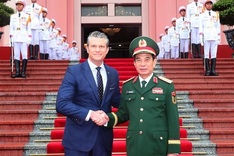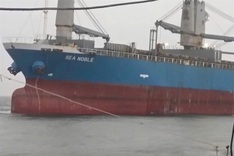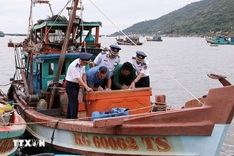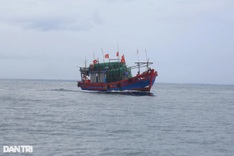USA and Japan are considered to be huge potential markets for Vietnamese fruits although they are currently only dragon fruit clients. The reason for the limitation is that they have very stringent requirements on product quality.
 |
| Fruits exposed at Vietnamese Fruit Festival in Tien Giang |
This is a common opinion from many delegates that were attending the seminar titled: “Vietnamese Fruits – Global Economic Integration: Opportunities and Challenges”, which was held as part of the Fruit Festival on April 20.
According to a report by PhD. Nguyen Huu Dat (from the Ministry of Agriculture & Rural Development), coconuts and dragon fruits are currently the largest export for fruits. Coconuts are mainly exported to China and dragon fruits are exported mainly to other Asian countries, lemons also remain in Asia (excluding China), while grapefruits and mangoes are exported mainly to Europe and Canada.
Dr. Dat also revealed that countries such as the USA, Japan, New Zealand, Australia, and South Korea have very high requirements for imported fresh fruits. Meanwhile, European countries, Canada and most Asian countries have less strict requirements on imported fresh fruits.
The export value for dragon fruits delivered to the USA and Japan was $74 million from 2007 to 2009. Vietnam will begin to export longans, lychees, rambutans, star apples and mangoes from 2010 to 2015 to the two markets.
“In order to maintain and develop our position in the markets, it’s necessary to check regularly and expand the model of garden planting as well as packing processes while trying to avoid fraudulence and dumping. The Ministry also continues to develop a "Good Agricultural Practices" (GAP) system to strengthen and ensure quality maintenance, particularly to control insecticide usage,” added Dat.
According to John Hey from Asiafruit Magazine, Vietnamese fruits have a very clear opportunity in European and USA markets as it can provide dragon fruits and grapefruits in all seasons. However, they still have to compete with cheaper prices from China and Thailand.
John Hey also said that in order to be successful in USA and European markets, production should meet demand of the markets and its requirements as well as being necessary to have an effective goods transportation system. Vietnam must also invest time and money in building long term trading relationships and a market penetration strategy.




















